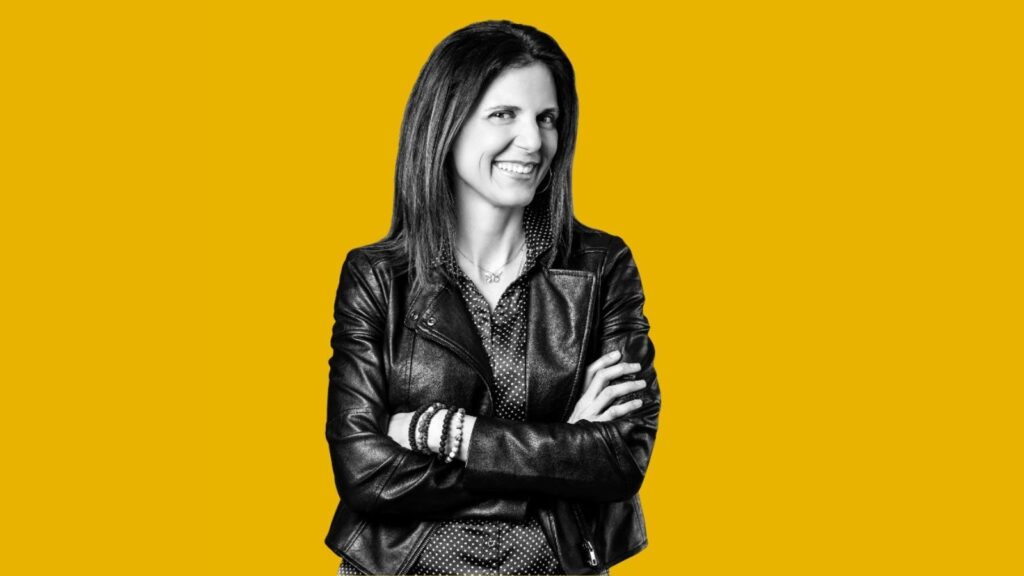
It wasn’t a lack of ideas that sunk the project. It was the silence that followed.
Tina Mathas has seen it happen too many times. Teams spend weeks refining an innovation, testing it with users, pitching it internally. But when it’s time to scale, things go quiet. The project is handed off to operations, and it either morphs into something unrecognizable or dies completely.
“What I found worked really well was to find the ambassadors — the people who were willing to bend the rules, not necessarily break them,” says Mathas. “People who did think outside of the box but felt more comfortable in the day-to-day.”
Mathas is bringing that experience to the mesh conference happening April 29-30 in Calgary. Her session, titled “From Idea to Impact: How to Structure Innovation Teams That Actually Deliver” offers a practical guide to building teams that can take bold ideas and make them real without getting trapped in process-heavy culture.
This isn’t about theory. It is grounded in lived experience, the kind that can sometimes get overlooked in favour of flashier headlines but is essential to making innovation stick.
Where innovation gets stuck
“Innovation is about transforming at scale, creating things that don’t exist today, anticipating need,” says Mathas. “That is a particular mindset. I don’t believe that continuous improvement is innovation.”
Mathas draws a sharp distinction between creativity, problem-solving, and true innovation. Too often, organizations flatten all three into one category and then fail to deliver.
Her point: not everything that sounds innovative leads to transformation.
“What often happens is you have these groups that come up with ideas, market test them, and then when the idea is ready to scale, a team will hand it off,” says Mathas. “Then it would either die or morph into something it wasn’t intended to be because the organization hadn’t been part of it from the beginning. A lot can get missed.”
For Mathas, it’s not that the idea lacks value — it’s that the surrounding structure is too fragile or too disconnected to support it.
“You have this small group of what I call the pirates,” she says, referring to the creatives. “But then there’s a need for translation and integration that happens with engineering and operational parts of the organization.”
Without that translation — that shared understanding across silos — the idea becomes vulnerable the moment it leaves the hands of its creators.
A lesson from the inside
Mathas has lived this challenge in real time. While working at a project at a big bank, her team was tasked with launching a product on a shoestring budget.
“We were able to get the initial launch from idea to build in five weeks,” she says. “That was unheard of in the bank at the time.”
The budget was $50,000 and the project was a crowdfunding platform.
It wasn’t just about cost or speed. It was about building the right team early. Her team included visionaries, but also the operational allies who could guide them through constraints, regulatory blind spots, and internal buy-in.
“When it came to actually scaling it within the organization, we already had people who understood what we had built, had been part of what we had built, and were ready to accept it and build on it,” she says.
How to structure for execution
Mathas’s session at mesh is designed for leaders who are tired of innovation theatre.
Mathas will cover how to build cross-functional teams, manage the handoff between idea generators and execution leads, and identify when an idea deserves more investment — and when it’s time to say no.
“I focus on 100 ideas,” she says. “How to kill an idea, how to pick the idea and stick with it, how to say no. All of those key elements to having innovation happen within an organization that are juxtaposed to how organizations run.”
The session goes beyond frameworks and gets into structure: the people, the relationships, and the decision-making approaches that help ideas survive the organizational maze.
Mathas believes the way companies talk about innovation has become too sanitized.
“We have diluted that to be running innovation like it’s part of our goal structure… fraught with a whole bunch of rules and measures that don’t apply and don’t allow for true innovation to happen.”
And yet, she’s not pessimistic. Her goal is to give people tools that reflect how complex organizations actually operate, not how they look in a slide deck.
A no-fluff debate on what counts as innovation
At mesh, Mathas’ session ends with something most conferences avoid: disagreement.
Mathas will lead a live debate on what really qualifies as innovation in a corporate setting. Some will argue that improving existing systems counts. Others, like Mathas, draw the line at transformation.
“The reason why I’m having the debate at the end is I could be wrong,” she says. “Some people have other viewpoints.”
Expect a candid, no-fluff discussion. Audience questions are welcome. The goal isn’t consensus — it’s clarity.
This session isn’t about frameworks for the sake of frameworks. It’s about getting real.
Mathas will share the tools she’s used to assess talent, structure teams, and stay focused on execution inside large organizations.
She’s blunt about what doesn’t work — and grounded in what actually does.
See Tina Mathas speak at mesh on April 29. You’ll leave with a new framework for structuring innovation teams and a clearer sense of what to stop doing if you want your best ideas to make it to market.

